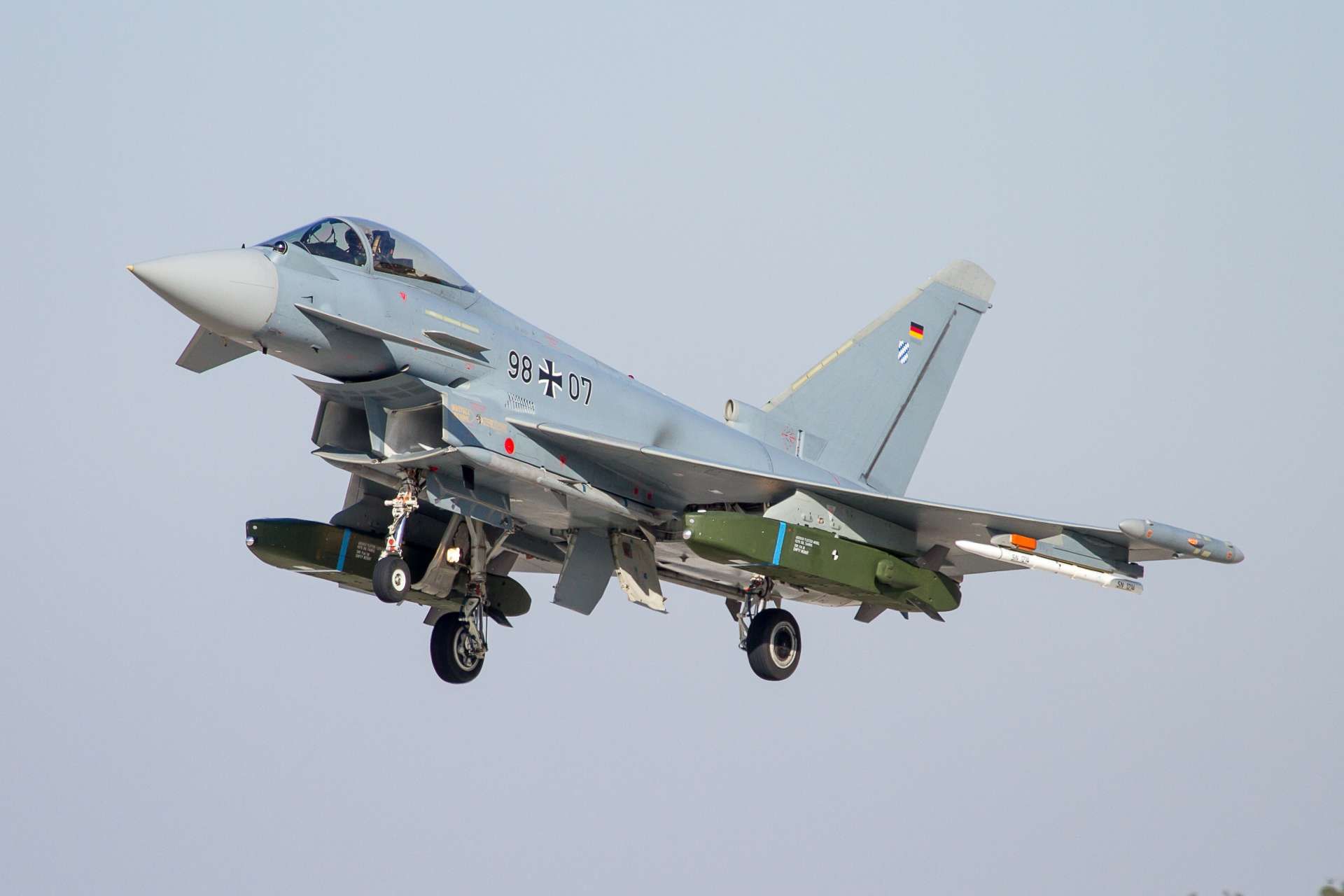Germany’s Bundestag Budget Committee has approved the €3.75 billion procurement of 20 Eurofighter aircraft under a new Tranche 5 package, with deliveries scheduled between 2031 and 2034. The move strengthens the Luftwaffe’s combat fleet and advances the Eurofighter EK electronic warfare variant that will take over the Tornado ECR mission.
On October 8, 2025, Germany’s Bundestag Budget Committee approved the procurement of 20 Eurofighter aircraft in a new Tranche 5 package valued at €3.75 billion, with deliveries slated from 2031 to 2034, alongside funding lines that advance the Eurofighter EK electronic-warfare standard. The decision forms part of seven major armament approvals spanning air, land, sea and munitions and reflects Berlin’s drive to harden deterrence and readiness. It is relevant because it both renews the Luftwaffe’s core combat fleet and migrates the Tornado ECR mission onto a sustainable platform while sustaining European industrial capacity.
Germany generally uses the Eurofighter designation rather than Typhoon. The Tranche 5 aircraft come with an electronically scanned E-Scan/AESA radar, engines, and spare and replacement parts, and are financed from the regular defense budget. For training, Berlin has approved a €412 million upgrade of flight and tactical simulators to prepare pilots for the radar and future capability increments on the weapon system, ensuring a coherent pipeline from classroom to cockpit. Within the Luftwaffe’s fast-jet mix, the Eurofighter remains the mainstay while the aging Tornado fleet retires; this order deepens air-policing, multi-role strike and, crucially, electronic combat and reconnaissance capacity that Germany is expected to provide to NATO.
Understanding the evolution by tranche clarifies what Tranche 5 adds. Tranche 1 established the baseline air-defense fighter and matured to limited swing-role in later blocks. Tranche 2 introduced new processing and avionics that underpinned modern weapon integration and broader multi-role employment. Tranche 3/3A incorporated growth provisions and defensive-aids improvements, preparing the airframe for advanced sensors like AESA radars and expanded networking. Germany’s Tranche 4 (often associated with the Quadriga standard) moved AESA and refreshed avionics into the mainstream and set the baseline for long-term upgrades. Tranche 5 builds directly on that arc: it takes the AESA-equipped baseline and pairs it with an electronic-warfare-centric roadmap so that EK features are designed in from the outset rather than bolted on, streamlining future increments across radar, mission systems and weapons.
Operationally, the move caps a year-long budgeting path flagged earlier in the defense planning cycle and now converts intent into funded programs with clear timelines. Beyond the 20 new-build jets, lawmakers approved further EK qualification for the suppression of ground-based air defenses through 2033. That effort covers integration of a digital self-protection and escort-jamming suite and associated anti-radiation weapons, plus electronic-warfare components for test facilities at the Eurofighter System Support Center, creating a development and verification backbone for the fleet’s pivot toward SEAD/DEAD. The result is a coherent, long-horizon plan: new aircraft arrive as the EK standard matures, allowing the Luftwaffe to field a credible, sustainable electronic-attack and emitter-location capability at scale.
The advantages over legacy platforms and earlier tranches are tangible. AESA radar brings markedly improved detection and tracking performance, faster revisit rates, better low-observable target handling and embedded electronic-attack options compared to mechanically scanned sets, which increases survivability in contested airspace. Consolidating air-to-air, precision strike and SEAD/DEAD on a single, modern airframe reduces logistics overhead and concentrates mass where it matters. For NATO, the new jets are positioned to provide enhanced sensor data and electronic-warfare effects along the Alliance’s eastern flank, extending relevance well into mid-century service life.
A concise comparison clarifies the division of labor with Germany’s other fast jets. Against Tornado, the Tranche 5/EK Eurofighter delivers higher availability, better kinematics, modern survivability suites and far deeper growth margins, while absorbing the ECR mission with digital sensors and jamming effects that the older platform cannot match economically at this stage of its life. Against the F-35A, roles are complementary rather than duplicative. F-35A contributes very-low-observable penetration, advanced sensor fusion and the nuclear-sharing commitment, and is optimized for first-day-of-war tasks against dense integrated air defenses. Eurofighter emphasizes sustained air superiority, quick reaction alert, high-payload swing-role strike, and, crucially after EK maturation, escort jamming and SEAD/DEAD at scale. In practice, F-35A opens contested airspace and provides stealthy sensing and strike, while Eurofighter supplies mass, persistence and electromagnetic effects, with both types sharing data to tighten the overall kill chain.
Concretely, the Tranche 5 package gives Germany several capability pillars. First, an AESA-equipped baseline across all new airframes that is ready for iterative software and mode growth, including advanced air-to-air and air-to-surface functions. Second, a native pathway to the EK standard with digital wideband receivers, geolocation accuracy improvements and escort-jamming options that enable the migration of the Tornado ECR mission. Third, enhanced mission-system computing and modular avionics designed to accommodate future datalinks, low-probability-of-intercept communications and cooperative EW techniques. Fourth, a training architecture, via the simulator upgrades, that mirrors operational increments so crews can absorb new radar/EW modes and weapons before they hit the flight line. Finally, industrial continuity for European sensor and mission-system production, which supports availability and long-term spiral upgrades.
